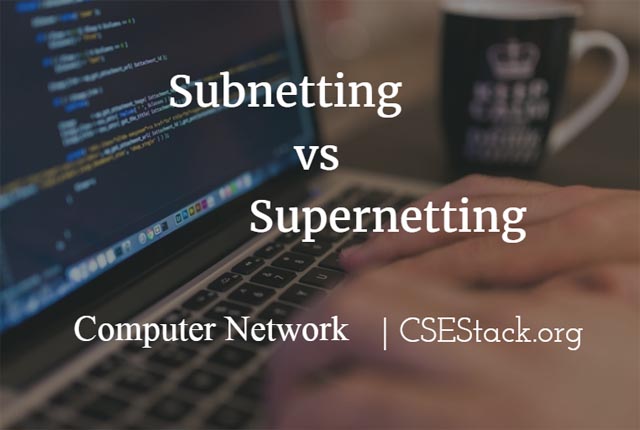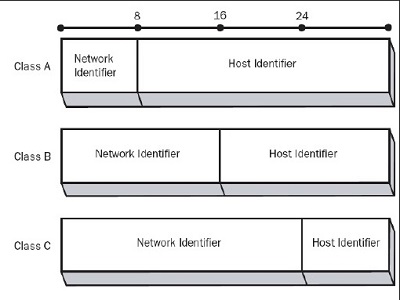
What is the main difference between Subnetting and Supernetting in Computer Networking?
Subnetting and supernetting is a very important topic in a computer network.
Table of Contents
As computers are connecting all over the world through the internet, good monitoring over the network is required. This monitoring should be count in terms of proven security, ease in troubleshooting, performance improvement and reliable data transfer over the internet. This gives rise to subnetting and supernetting in the internet era.
First I will describe subnet and supernet. After that, I will talk about the difference between subnetting and supernetting.

The process of dividing the single network into the multiple subnets is called as subnetting.
Suppose there an organization that has class A or class B block of the addresses assigned. An organization can divide these addresses into multiple contiguous groups. This individual group of addresses is called as a subnet.
You can read the detail of different IP address classes and their range. It will help you to understand this topic very well.
There are many advantages of using subnetting.
The process of aggregating two or more networks for which it generates a single IP address is called as supernetting.
It is considered as the reverse process of subnetting.
Why is suppernetting required?
Let’s take an example.
Class C block provides 256 host addresses. Class B block provides 65536 host IP addresses. If any of the organization wants 500 IP addresses, class C block will not be sufficient. Having 65536 addresses in class B block is a waste of IP addresses. To tackle with this, an organization can apply for two contiguous class C block of IP addresses and combine both of them.
The combined network is called as supernet and the process of aggregation is called as supernetting.
Every 32 bit IP address has network and host identifier bits. Network identifier bits decide which network data packet should be sent. Host identifier bits determine the host inside the network to deliver the packet.
Refer the following IP address classes diagram with host and network identifiers bits.

These are the very important point you should know. You can see lots of questions in various placement interviews and to find the difference between subnetting and supernetting.
If you are looking for a reference book to prepare for computer networking, I would like to recommend you a Computer Networks by Tanenbaum book. No other book can beat this one if you want to extract knowledge from this gold mine. Go for it!
Computer networking is my favorite topic. It is really so interesting. If you have any point to discuss over subnetting vs supernetting, feel free to write in the comment section below. I will try to reply you as soon as possible.
Thxx for this article…
Welcome, mate!
Nice to see you here and glad you like it.
Thank you for this valuable information……. Keep sharing 🙂
You’re welcome!
Surely I’m trying our best. Stay tuned for more!
Thanks for the information. I am working a project at work and your site has been very helpful. However, I believe there is a correction in your example to be made. At one point you flipped your Class C and B blocks for # of hosts. Someone that may be looking at this that is very new to subnetting/supernetting differences may be really confused.
Let’s take an example.
Class C block provides 256 host addresses. <——————–
Class B block provides 65536 host IP addresses. <——————
If any of the organization wants 500 IP addresses,
class B block will not be sufficient. <——————————
Having 65536 addresses in class C block <————————-
is a waste of IP addresses.
To tackle with this, an organization can apply for
two contiguous class C block of IP addresses and combine both of them. <———————–
Thank you so much for the correction and for your concern, Tina.
Fixed it.
Glad to see you here.